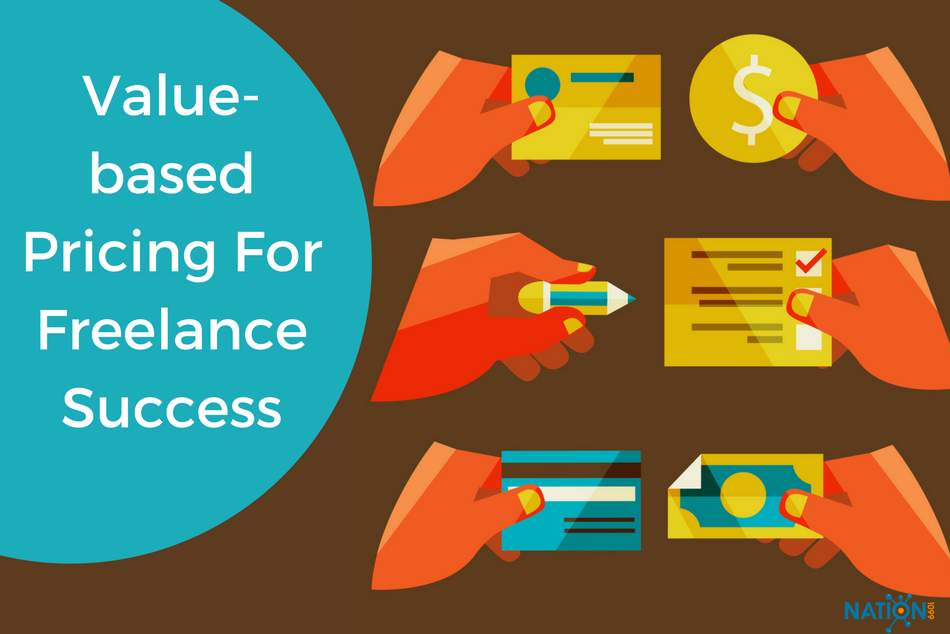We recently discussed freelance rates that are based project pricing in light of the value you provide your clients and the various consultant pricing strategies you can use to get the best compensation out of your projects.
In this post I want to talk about project pricing again, but from a different angle. In the sections below we’ll look at the factors most solos forget when they start setting their freelance rates.
For most of us, we didn’t have to think about any of these nuances when we started our professional careers because our employers took care of them. Now that you’re the employer, you can’t afford to forget these things when determining appropriate freelance rates for your independent business.
The tax impact on your freelance rates
Taxes happen every year . . . We may not like it, but we also don’t want a visit from the IRS on the business calendar (or the CRA if you’re in Canada like me).
This visit is a nightmare scenario for many business owners. Neglecting to save the money you owe the government can get you in serious trouble. And you can be sure the consequences of this mistake will hurt your business.
So start out by saving 25 percent of every contract you win. Your taxes may not even come out to this much, but having 25 percent of your income sitting in a bank account means that even if you underestimated your tax responsibility, you will still be safely prepared and not scrambling every tax period to make payments.
Every time you get paid, take 25 percent and put it in an account that’s separate from your general business operating account. Keep that money there and forget about it until it’s time to pay taxes. The figure on your paychecks is not all your money — so best not to get attached!
Stop and think: If socking away 25 percent puts you in a very tight place financially, ask yourself why. Perhaps rent is unreasonably high relative to your income.
. . . Or maybe it’s time to re-examine your current freelance rates and raise your prices in strategic places. Are your most time-intensive responsibilities paying off proportionally, or are you drowning in low-value busy work?

Business savings
After taxes, the next big thing most freelancers forget to account for in freelance rates are their business savings.
The reality is that you will have slow times. If you have no cushion in your accounts, you will probably have to head back to the day job when things get slow.
I know I advised saving 25 percent of your income, but really you should save 5 percent more than that. That means if you’re starting with 25 percent as your tax savings, save 30 percent. Put it away for the rainy day that will inevitably come.
What our freelance rates really account for: It’s also important to understand that when we’re pricing ourselves, we aren’t just placing value on the work we do — we’re also calculating some of the risk we take on as independents. We can have steady work for months, even years, and, out of nowhere, the well can dry up. We need basic precautions taken in many areas to weather slow spells.
Replacement expenses
You also need to save for office supplies and upkeep like:
- New computers
- Paper
- Computer bags
- Monitors
- Mouse devices
- Keyboards
I plan to purchase a new computer every two-to-three years. I don’t always need to make this investment that regularly, but having the money readily available for it means that I’m not in a tailspin if technology fails me.
Outside of computer costs, keyboards will break, monitors will die — you may need a stack of elastics.
Make a list of the hardware and supplies you need to run your business and add a line to your budget so that when replacement time comes, you’re not caught without the funds needed.
If these items need regular replacement or upkeep in order for you to perform your essential client work, you may need to buffer your freelance rates to accommodate these regular expenses.
Important Note: The 5% you’re saving for a rainy day shouldn’t be going towards any of these expenses. If it does then you’ll have no buffer when things slow down.
Software costs
Every year I’m surprised by how much I spend on software. Some of the expenses are regular payments for things like my billing software of choice, 17hats, or my Adobe software subscription.
Then the costs rise even more when I add the software that “looks like it might increase my productivity.” Not all of these products amount to things I use regularly, but I still have to pay for the occasions I do use them.
Tip: Instead of purchasing on a whim, put together a monthly budget and use that to evaluate whether it’s worth trying out some new software. If you can stick to that budget, you’re much less likely to be surprised at the end of the year.
Also, have you found yourself purchasing recurring subscriptions to software services in order to service new or growing clients? If so, just as you would with the tools mentioned above, build these costs into your new rates.
Travel expenses for clients and business growth
While you may not board a plane very often for business reasons, you should regularly do some sort of in-person networking. In many newer positions in the gig economy, clients may also insist on a hybrid remote/in-person work model. This means gas or transit expenses.
If travel for certain clients becomes a regular occurrence, these clients either need to reimburse you for your travel or you need to factor these additional expenses into your freelance rates.
Many of you go to conferences each year and if you want to do this without breaking the bank, you need to plan for these expenses and the necessary lodging costs that might accompany them.
Don’t just find conferences and go on a whim. Put together a budget and evaluate the actual importance of the conferences that most interest you. Obviously, you should prioritize the ones that have the highest potential to bring value to your business!
Without an event/professional growth budget, it’s far too easy to ‘blow’ your funds impulsively on low-value conventions. You absolutely want to avoid the scenario of finding a conference that has significant value, but not being able to go because you’ve already spent too much on low-value events earlier in the year. Think quality over quantity with your budget.
Bottom line: Your freelance rates need to cover indirect expenses
You’ll notice that I used the word “budget” many times in this article. If you take one major point from this post, then let it be this: you need to budget your funds and think critically about how your budget plays into what you charge for your freelance rates.
The constraints of a budget mean that you can make educated decisions about where your time and money is spent instead of spending randomly. It also means that you have some concrete guidelines that internally guide your compensation requirements from clients.
By having a solid business budget you’ll spend less and have more to show for it. By having a good savings plan, you’ll have funds to keep yourself going when things slow down.
I also know that when I started I didn’t plan for any of these things and I made it work by the skin of my teeth. Don’t get yourself into the position I did.
Remember to save for taxes and for a rainy day. Remember to plan for the hardware you need to buy. Remember to ask for what you’re worth and what you really need to live on.

Curtis McHale
Guest Contributor
Curtis is a business coach and speaker. He focuses on helping businesses build effective processes for vetting ideal clients and building a business that doesn’t take every hour of every day to run. Learn more on his website.










